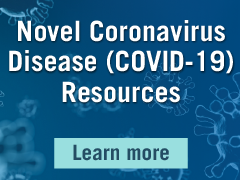Therapies
Plasma protein therapies are unique, biologic medicines that are either infused or injected to treat a variety of rare, life-threatening, chronic and genetic diseases including bleeding disorders, immune deficiencies, pulmonary disorders, neurological disorders, shock and trauma, liver cirrhosis and infectious diseases such as tetanus, hepatitis and rabies.
Therapy |
Conditions Treated |
Treatment Outcomes |
|
Coagulation factors: Essential for blood clotting, used to treat genetic bleeding disorders and surgical bleeding. |
Bleeding from trauma Over dosage of anticoagulants Liver disease Bleeding Disorders
|
|
|
Immunoglobulins: Proteins used to neutralize foreign objects such as bacteria and viruses.Used to treat primary and secondary immunodeficiencies and autoimmune disorders. |
Immunodeficiencies
Chronic Inflammatory Demyelinating Polyneuropathy (CIDP) - A rare disorder of the peripheral nerves. Idiopathic Thrombocytopenic Purpura (ITP) - A bleeding disorder in which the immune system destroys platelets, which are necessary for normal blood clotting. |
|
|
Hyperimmune Globulins: |
Rabies, tetanus and hepatitis Rh negative pregnancy Liver transplant and surgery |
|
|
Alpha-1 Proteinase Inhibitors: Protects tissues from enzymes of inflammatory cells. |
Alpha-1 Antitrypsin Deficiency - Genetic deficiency which may result in life-threatening lung disease in adults and/or liver disease in people of any age. |
|
|
Albumin: The major plasma protein, regulating blood volume and providing many essential functions. |
Cardiac surgery Liver disease Severe infections Emergency and Surgical Medicine - Used to treat shock, severe burns and during surgery. |
|
|
C1-esterase inhibitor (C1-INH): A protein found in the fluid part of your blood. It controls a protein called C1, which is part of the complement system. This system is a group of proteins that move freely through your bloodstream. |
Hereditary angioedema - Rare but potentially life-threatening condition characterized by acute attacks of usually non-itching edema (swelling) of the face, larynx (airway), abdomen and extremeties. |
|
The Power of Plasma Donation
This detailed video takes viewers through all of the steps a first-time plasma donor would experience during the process of donating lifesaving plasma.

The need for plasma and plasma donors is more urgent than ever before. Visit givingplasma.org to learn more and to find a donation center near you.
Copyright © 2023 PPTA. All rights reserved. Sitemap | Privacy Policy
Realisation by Welldotcom - Puntgaaf Internetbureau







